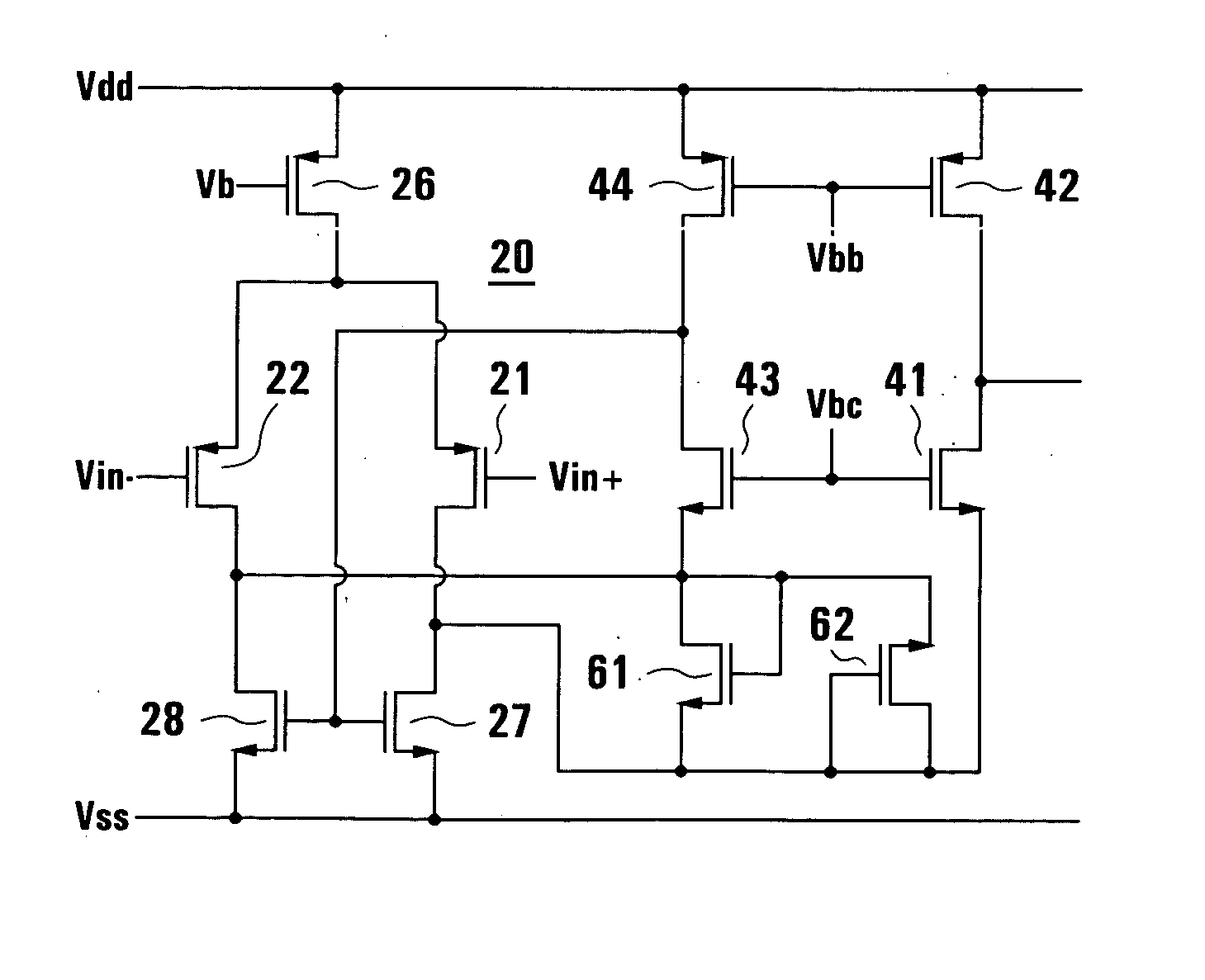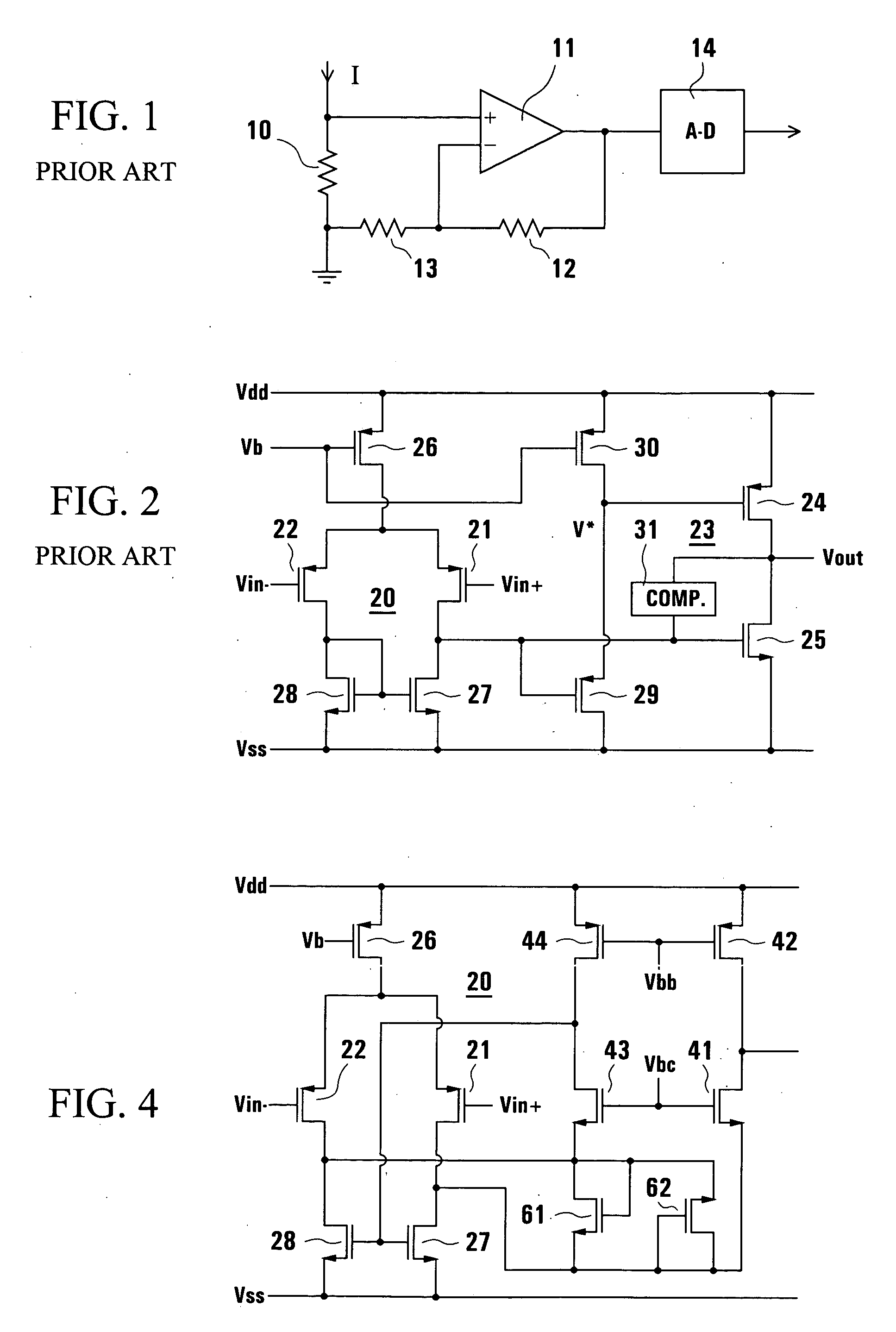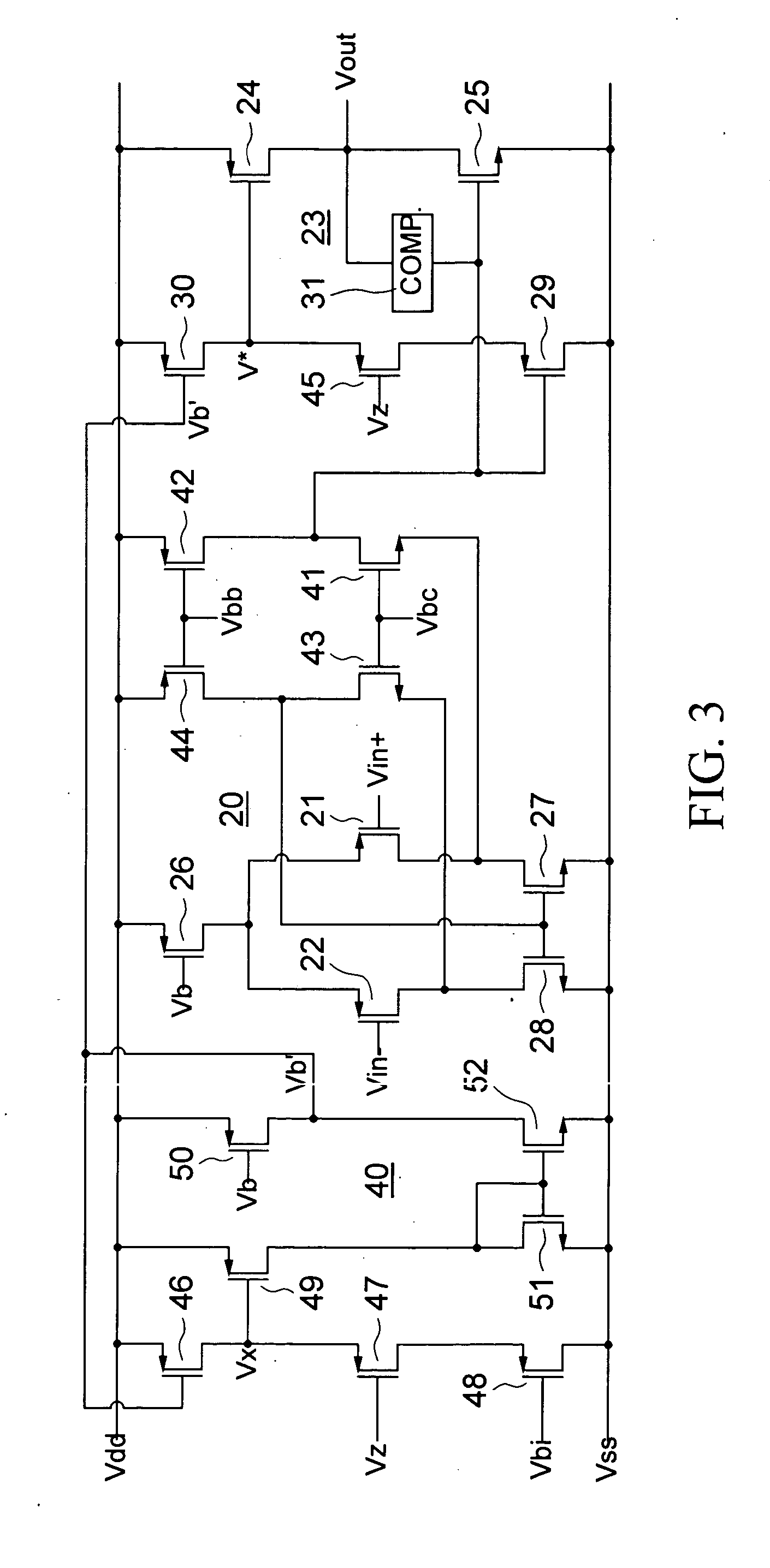Class ab CMOS amplifiers
a cmos amplifier and amplifier technology, applied in the field of class ab cmos amplifiers, can solve the problems of large crossover distortion, complex design of ab cmos amplifiers, and difficult to provide a low and controlled quiescent current, and achieve the effect of reducing the variation of quiescent curren
- Summary
- Abstract
- Description
- Claims
- Application Information
AI Technical Summary
Benefits of technology
Problems solved by technology
Method used
Image
Examples
Embodiment Construction
[0028] Referring to the drawings, FIG. 1 illustrates an arrangement in which a resistor 10 of resistance Rs is used for sensing a current I to ground. For example, the current I may be a power supply current which it is desired to monitor, the resistor 10 producing a small voltage Vin+=I.Rs which is supplied to the non-inverting or + input of a differential CMOS amplifier 11. A feedback resistor 12, having a resistance Rf, is connected between an output of the amplifier 11 and its inverting or − input at a voltage Vin−, and a resistor 13 having a resistance Rg is connected between the inverting input and ground, so that an output voltage Vout of the amplifier is ideally equal to (1+Rf / Ri)I.Rs. For example, this output voltage is supplied to an analog-digital (A-D) converter 14 which produces at its output a corresponding digital value.
[0029] It is typically desired for the resistance Rs to be small, e.g. 0.1 Ω or less; consequently the differential input voltage to the amplifier 11...
PUM
 Login to View More
Login to View More Abstract
Description
Claims
Application Information
 Login to View More
Login to View More - R&D
- Intellectual Property
- Life Sciences
- Materials
- Tech Scout
- Unparalleled Data Quality
- Higher Quality Content
- 60% Fewer Hallucinations
Browse by: Latest US Patents, China's latest patents, Technical Efficacy Thesaurus, Application Domain, Technology Topic, Popular Technical Reports.
© 2025 PatSnap. All rights reserved.Legal|Privacy policy|Modern Slavery Act Transparency Statement|Sitemap|About US| Contact US: help@patsnap.com



